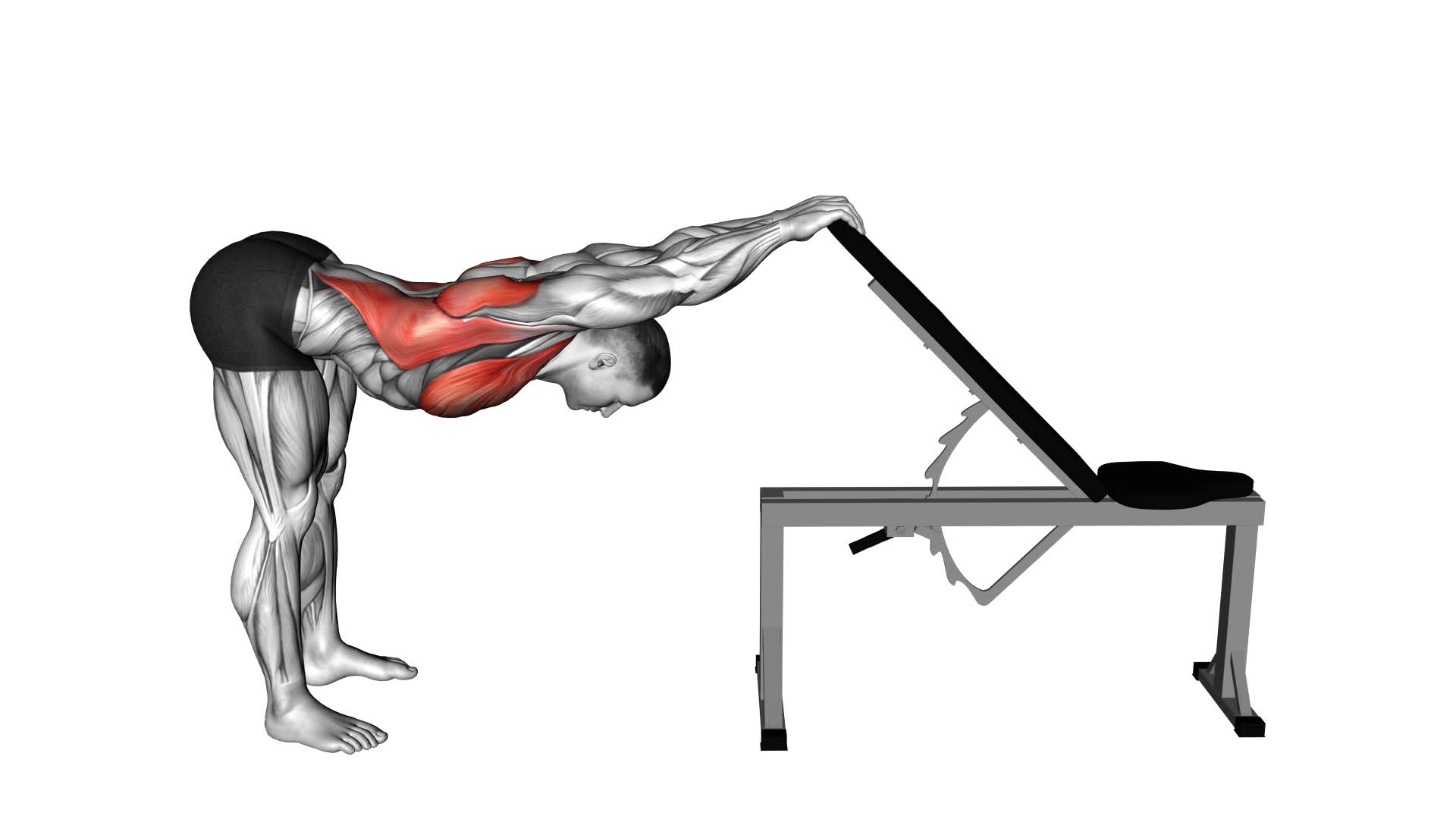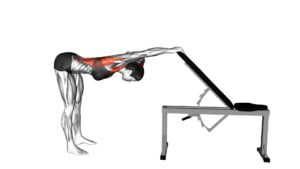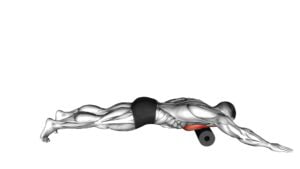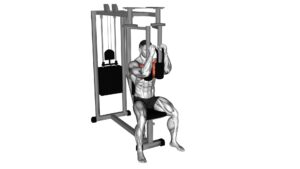Back Pec Stretch – Video Exercise Guide & Tips

Looking to improve your flexibility and relieve tension in your back? Check out our Back Pec Stretch – Video Exercise Guide & Tips.
Watch This Exercise Video
In this article, we'll show you the proper form and technique for this stretch, along with variations and modifications to suit your needs.
Avoid common mistakes and get the most out of your stretch with our helpful tips.
Get ready to stretch and strengthen your back with our expert guidance.
Key Takeaways
- The back pec stretch improves flexibility and mobility.
- It targets muscles in the chest, upper back, and shoulders.
- Proper form and technique, such as maintaining straight posture and avoiding rounding shoulders, are important for maximizing the benefits of the stretch.
- Using a resistance band can increase the intensity of the stretch.
Benefits of the Back Pec Stretch
To experience the benefits of the Back Pec Stretch, you should incorporate it into your regular exercise routine. Stretching is important for overall flexibility and mobility. It helps to improve the range of motion in your joints, which in turn enhances your performance in various activities. The Back Pec Stretch specifically targets the muscles in your chest, upper back, and shoulders, helping to alleviate tension and tightness in these areas.
To incorporate the Back Pec Stretch into a full body stretching routine, start by standing upright with your feet shoulder-width apart. Extend your arms out to the sides, parallel to the ground, with your palms facing forward. Gently squeeze your shoulder blades together as you bring your arms back, feeling a stretch across your chest. Hold this position for 15-30 seconds, focusing on deep and controlled breathing. Repeat the stretch 2-3 times.
Proper Form and Technique
To perform the Back Pec Stretch with proper form and technique, stand upright with your feet shoulder-width apart and extend your arms out to the sides, parallel to the ground. Make sure to maintain a straight posture throughout the exercise.
Many people have common misconceptions about this stretch, so it's important to understand the correct technique to avoid common injuries.
First, avoid rounding your shoulders or hunching forward during the stretch. This can put unnecessary strain on your back and neck. Instead, focus on keeping your chest open and your shoulder blades pulled back and down.
Next, be mindful of the position of your arms. They should be parallel to the ground and not too far behind or in front of your body. This will ensure that you're targeting the pec muscles effectively.
It is also important to avoid jerking or bouncing movements while performing the Back Pec Stretch. This can increase the risk of injury and prevent you from properly stretching the muscles.
Variations and Modifications
For a modified version of the Back Pec Stretch, try using a resistance band to increase the intensity of the exercise. This variation allows you to target and stretch your back and pectoral muscles even more effectively.
To perform the modified back pec stretch, start by securing one end of the resistance band to a sturdy anchor point, such as a doorknob or a bar. Hold the other end of the band with your hand and step back until you feel tension in the band. Keep your arm straight and slowly pull your arm across your body, feeling the stretch in your back and chest.
Hold the stretch for about 20 to 30 seconds, then release and repeat on the other side. The resistance band provides added resistance, making this variation more challenging and beneficial for strengthening and stretching your muscles.
Remember to always maintain proper form and listen to your body to avoid any discomfort or injury. If you're looking for different stretches or alternative exercises to target your back and pecs, the resistance band variation of the Back Pec Stretch is a great option to try.
Common Mistakes to Avoid
Avoid these common mistakes when performing the Back Pec Stretch to ensure proper form and maximize the benefits. It's important to pay attention to your technique and make sure you're executing the stretch correctly. Here are some common mistakes to avoid:
- Rounding your shoulders: Keep your shoulders down and back throughout the stretch. Rounding your shoulders can reduce the effectiveness of the stretch and put unnecessary strain on your neck and upper back.
- Arching your lower back: Maintain a neutral spine position and avoid overarching your lower back. This can lead to discomfort and diminish the stretch's effectiveness.
- Rushing the stretch: Take your time and hold the stretch for the recommended duration. Rushing through the exercise can prevent your muscles from fully lengthening and limit the benefits.
- Not breathing properly: Remember to breathe deeply and relax as you hold the stretch. Holding your breath can increase tension in your muscles and hinder the stretch's effectiveness.
- Overstretching: Be mindful not to push too hard or go beyond your comfortable range of motion. Overstretching can lead to injury and prevent you from progressing in your flexibility.
By avoiding these common mistakes and focusing on proper form, you can ensure that you're getting the most out of the Back Pec Stretch.
Take your time, listen to your body, and enjoy the benefits of this effective exercise.
Tips for Maximizing the Stretch
When aiming to maximize the stretch, it's important to focus on proper technique and execution of the Back Pec Stretch. By following these tips, you can effectively enhance your flexibility and range of motion.
Firstly, make sure to maintain proper posture throughout the stretch. Keep your back straight and your shoulders relaxed. This will allow for a deeper and more effective stretch.
Secondly, breathe deeply and consistently throughout the stretch. Deep breathing helps to relax your muscles and increase the stretch. It also promotes oxygen flow to the muscles, aiding in their flexibility.
Additionally, it's important to start the stretch slowly and gradually increase the intensity. Push yourself to a comfortable limit, but avoid any pain or discomfort.
Finally, be consistent with your stretching routine. Regularly incorporating the Back Pec Stretch into your exercise routine will lead to greater flexibility and range of motion over time.
Frequently Asked Questions
How Often Should I Perform the Back Pec Stretch Exercise?
To get the most out of the back pec stretch exercise, it's important to know how often you should perform it. Regular practice of the back pec stretch offers numerous benefits, such as improved flexibility and posture, reduced muscle tension, and increased range of motion.
But how often should you do it? Stick to a routine of performing the back pec stretch exercise at least 2-3 times a week to maintain its effectiveness and enjoy the full range of benefits it offers.
Can the Back Pec Stretch Help Improve My Posture?
Performing the back pec stretch correctly can provide several benefits, including improving your posture. By stretching the muscles in your back and chest, you can help counteract the effects of sitting for long periods or hunching over a computer.
This exercise targets the pectoralis major and minor muscles, which can become tight and contribute to poor posture. Incorporating the back pec stretch into your routine can help lengthen and strengthen these muscles, promoting better posture overall.
Is It Safe to Perform the Back Pec Stretch if I Have a Shoulder Injury?
If you have a shoulder injury, it's important to take precautions when performing the back pec stretch. It's always best to consult with a healthcare professional before attempting any exercises that may aggravate your injury.
If the back pec stretch isn't safe for you, there are alternative stretches available that can help alleviate tension in the pecs without putting strain on your shoulders.
Can the Back Pec Stretch Help Relieve Tension in the Upper Back and Neck?
Yes, the back pec stretch can help relieve tension in your upper back and neck. By stretching the muscles in your chest and shoulders, you can release tightness and reduce muscle tension in these areas.
This stretch promotes flexibility and improves posture, which can also contribute to relieving tension in the upper back and neck. Regular stretching has numerous benefits for your overall muscle health and can help prevent future discomfort.
Are There Any Pre-Existing Conditions or Injuries That Would Make the Back Pec Stretch Unsuitable for Me?
If you have any pre-existing conditions or injuries, it's important to consider whether the back pec stretch is suitable for you. It's always best to consult with a healthcare professional or physical therapist before attempting any new exercises. They can evaluate your specific situation and provide guidance on whether this stretch is safe for you.
It's crucial to prioritize your safety and avoid aggravating any existing conditions or injuries.
Conclusion
In conclusion, the back pec stretch is a beneficial exercise for improving flexibility and relieving tension in the upper body. By maintaining proper form and technique, you can effectively target the muscles in your back and chest.
Remember to listen to your body and avoid common mistakes to maximize the effectiveness of this stretch. Incorporate variations and modifications to suit your fitness level and goals.
Follow these tips to ensure a successful and productive back pec stretch routine.

Author
Years ago, the spark of my life’s passion ignited in my mind the moment I stepped into the local gym for the first time. The inaugural bead of perspiration, the initial endeavor, the very first surge of endorphins, and a sense of pride that washed over me post-workout marked the beginning of my deep-seated interest in strength sports, fitness, and sports nutrition. This very curiosity blossomed rapidly into a profound fascination, propelling me to earn a Master’s degree in Physical Education from the Academy of Physical Education in Krakow, followed by a Sports Manager diploma from the Jagiellonian University. My journey of growth led me to gain more specialized qualifications, such as being a certified personal trainer with a focus on sports dietetics, a lifeguard, and an instructor for wellness and corrective gymnastics. Theoretical knowledge paired seamlessly with practical experience, reinforcing my belief that the transformation of individuals under my guidance was also a reflection of my personal growth. This belief holds true even today. Each day, I strive to push the boundaries and explore new realms. These realms gently elevate me to greater heights. The unique combination of passion for my field and the continuous quest for growth fuels my drive to break new ground.



